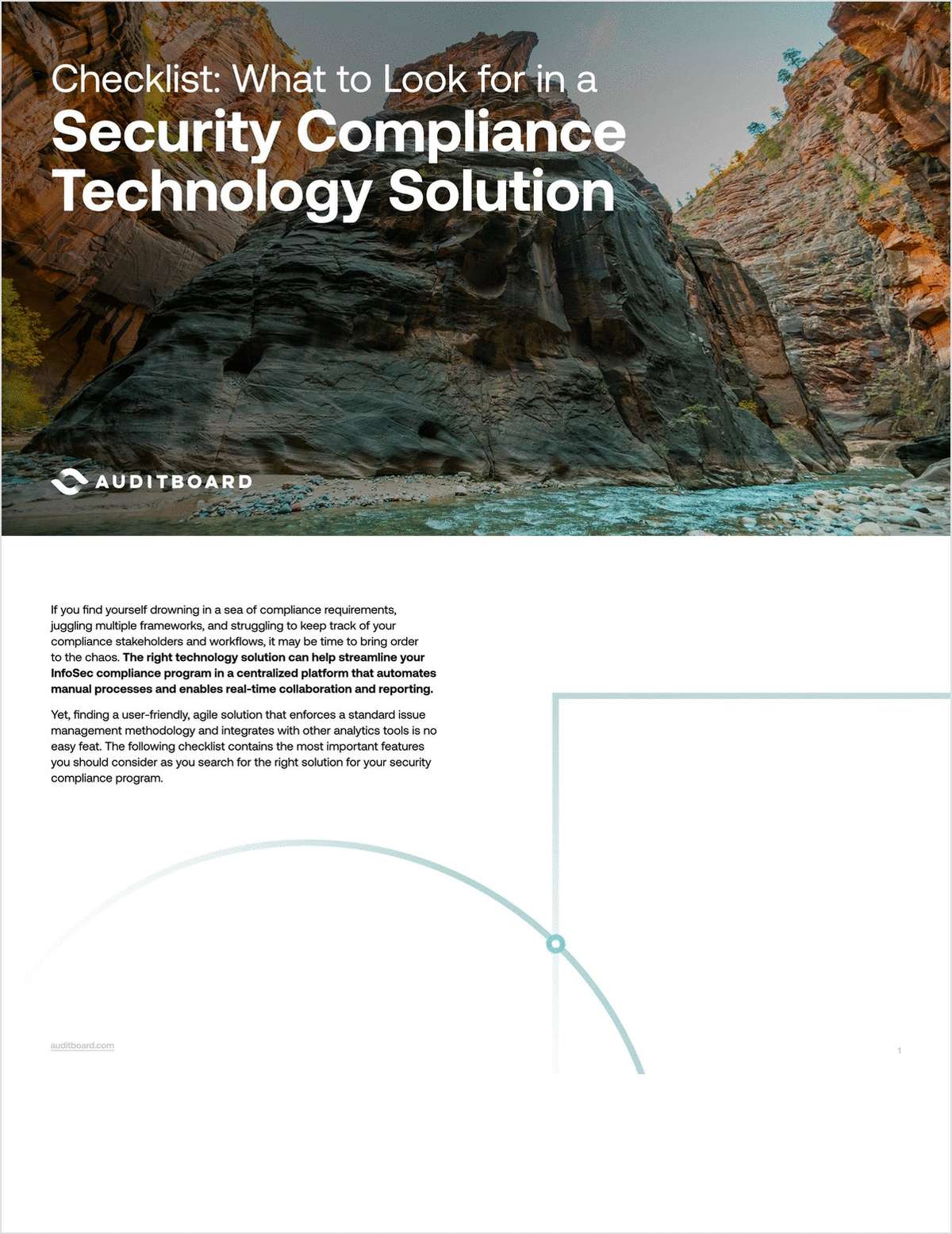 Struggling to juggle numerous compliance requirements, frameworks, stakeholders, and workflows? The right technology can help bring order to the chaos. To ensure your team finds a solution that meets their needs, get this checklist of key features to consider.
Struggling to juggle numerous compliance requirements, frameworks, stakeholders, and workflows? The right technology can help bring order to the chaos. To ensure your team finds a solution that meets their needs, get this checklist of key features to consider.
If you find yourself drowning in a sea of compliance requirements, juggling multiple frameworks, and struggling to keep track of your compliance stakeholders and workflows, it may be time to bring order to the chaos. The right technology solution can help streamline your InfoSec compliance program in a centralized platform that automates manual processes and enables real-time collaboration and reporting.
Not sure where to start? This downloadable checklist from AuditBoard offers a list of nine features to look for in compliance management technology, such as:
A Centralized, Single Source of Truth
The risk and regulatory landscapes are constantly evolving and compliance requirements change. As your program matures, juggling multiple frameworks and requirements can become a complex and massive undertaking. A connected platform should facilitate this by serving as the centralized database and single source of truth for your risk, controls, and compliance data. This is foundational because without a proper structural database to support and link different data points to each other, analytics and automation are not possible.
Real-Time Collaboration and Follow-Up Capabilities
A robust InfoSec program requires cross-functional collaboration. Technology should facilitate this through cloud-based features like in-application commenting, tagging, role-based user permissions, automated workflows, and integrations with other collaboration applications, such as Slack and Jira. An example of how this works in action: The InfoSec team can create requests within Jira, directly from the compliance platform, so all questions control owners have can be asked and answered in the tools they already use, which is linked to the security platform itself — with a comments log showing the entire history of the communication.
Ability to Standardize the Issue Management Workflow
Standardizing the issue management workflow is essential in maintaining a security compliance program. A solution’s workflow should support the standardized issue management methodology agreed upon by key stakeholders throughout the issue management lifecycle. If no formal process is defined, then it is imperative a solution provides the baseline capabilities required to set up and formalize an issue management workflow.
Finding a user-friendly, agile solution that enforces a standard issue management methodology and integrates with other analytics tools is no easy feat. Get a copy of the checklist to have on hand in your search.

Offered Free by: AuditBoard
Request Your Free eBook Now:
If you cannot see the form, please click here.

